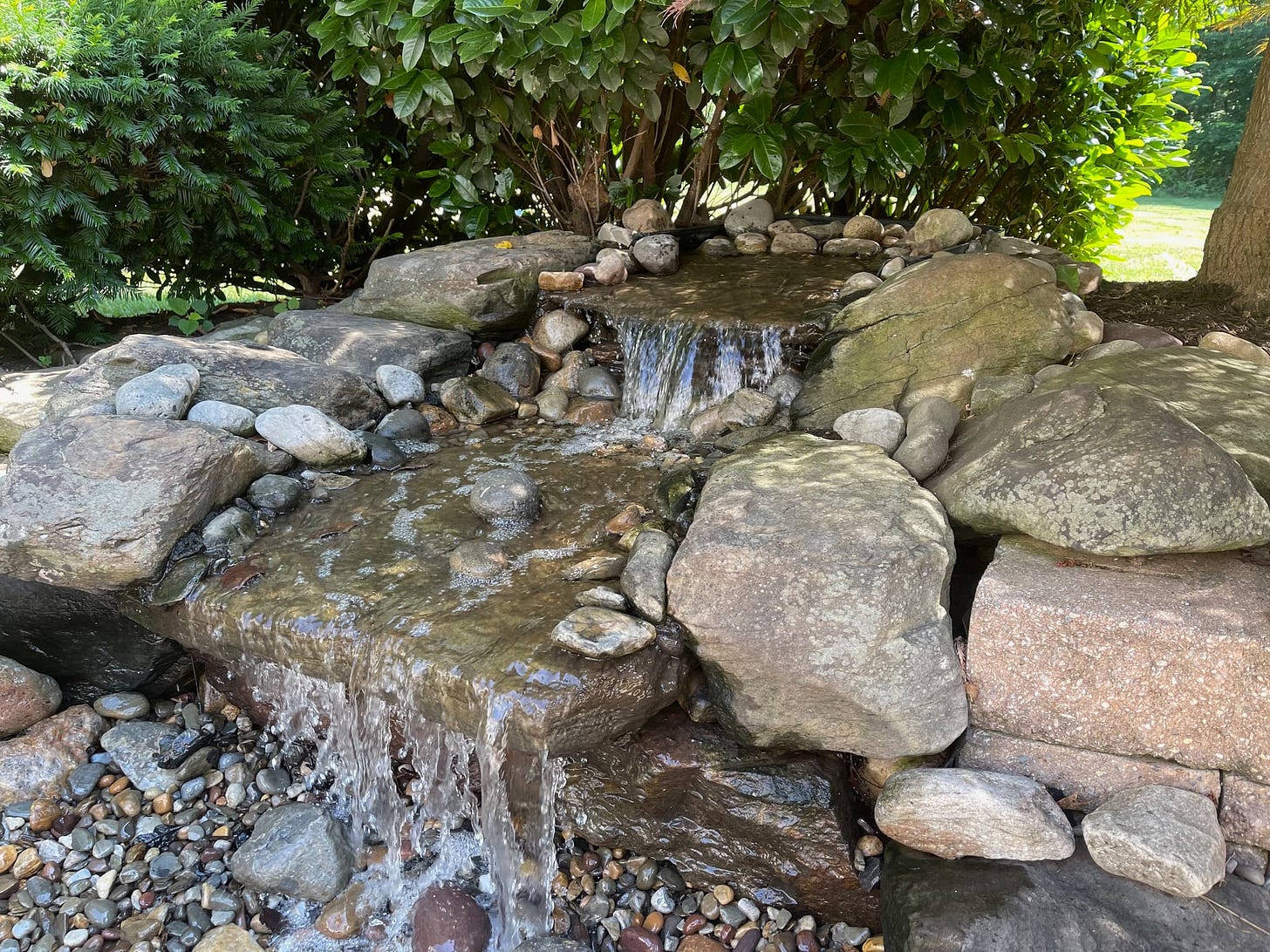Summer is Here
Assorted notes, observations, and comments about the garden as we steam into (Get it? steam?) late June and July.
I’m looking at the extended weather forecast for the week, and the temperatures by the weekend are frightening. They are calling for high temps of 100 degrees, and like all gardeners (I suppose) I’m wondering what impact such brutal heat will have on my flowers. Notably, I’m concerned with how much water I need to give them as the week wears on. As usual, I’m totally confused. My beds are irrigated with pop-up sprayers that spray about 10 minutes of water at each station. The system is scheduled to water the back beds at or around 4-5 a.m., on Tuesday, Thursday, and Saturday, so presumably the plants should be getting enough water. Unfortunately, my research tells me this is exactly the WRONG way to water the plants, because frequent but shallow watering promotes root rot and other horrible things. It is apparently MUCH better to water once per week, but water deeply, so the plants get the water but there is enough time for the soil to dry between waterings. Not to mention that if you are going to irrigate your beds you should use drip irrigation and not pop-up sprayers. Not sure deep watering once per week works well for some of the plants in my sun bed, like yarrow, Russian sage, and ornamental grasses, which are very heat tolerant and should not be overwatered. It’s perfect for my coneflowers, shasta daisies, and black-eyed Susans. But the annuals I recently planted can be watered every day, especially when it’s very hot. In short, I’m not sure what to do about watering plants this week, but by the time you read this post the drama will be behind us and I’ll be able to report on how many plants I managed to screw up. P.S. Don’t tell me to stick my finger in the soil and if it feels dry, the plants need water. I’ve tried this method and all I feel when sticking my finger in the dirt is cold … and maybe a little stupid.
Speaking of the sun bed, it looked so scraggly last season that when I wrote about the bed last fall (the post was published this February) I was reminding myself, and my readers, that new beds take some time to fill in and look like you imagined they would. Here we are, a full season later, and I’m pleased to report a great deal of progress with the look of this bed. I decided to move the shasta daisies and coneflowers forward in the bed with the notion that I would have three levels of plants when you look at the bed from the front. In the back are the tallest plants, including Russian sage, yellow and purple iris, and a couple of dwarf ornamental grasses, which admirably hold up the vertical interest in the back of the bed, along with the bird feeder which adds its own vertical structure. For the record, I planted dwarf pampas grass and adagio maiden grass, and I did it all by myself.
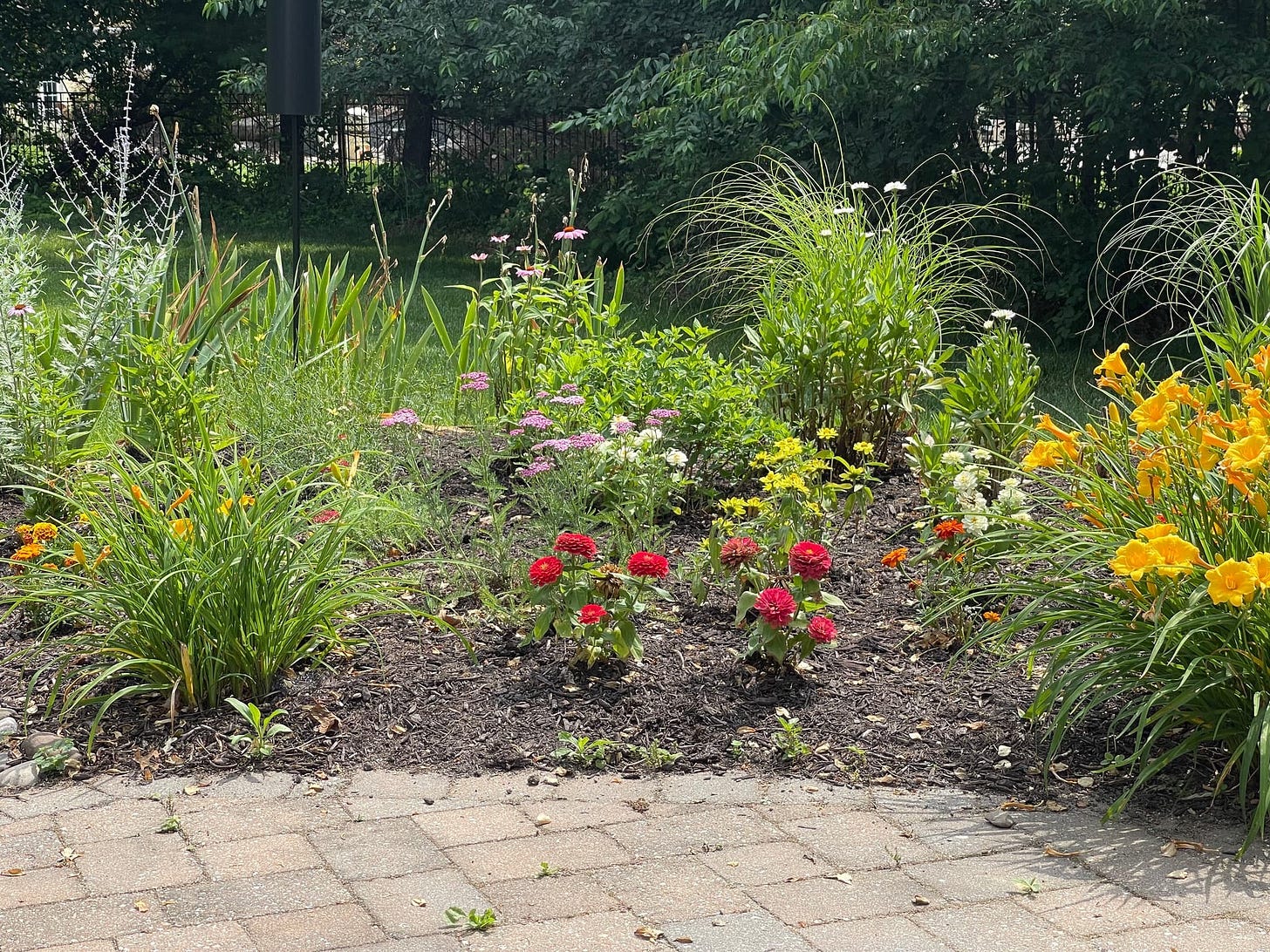
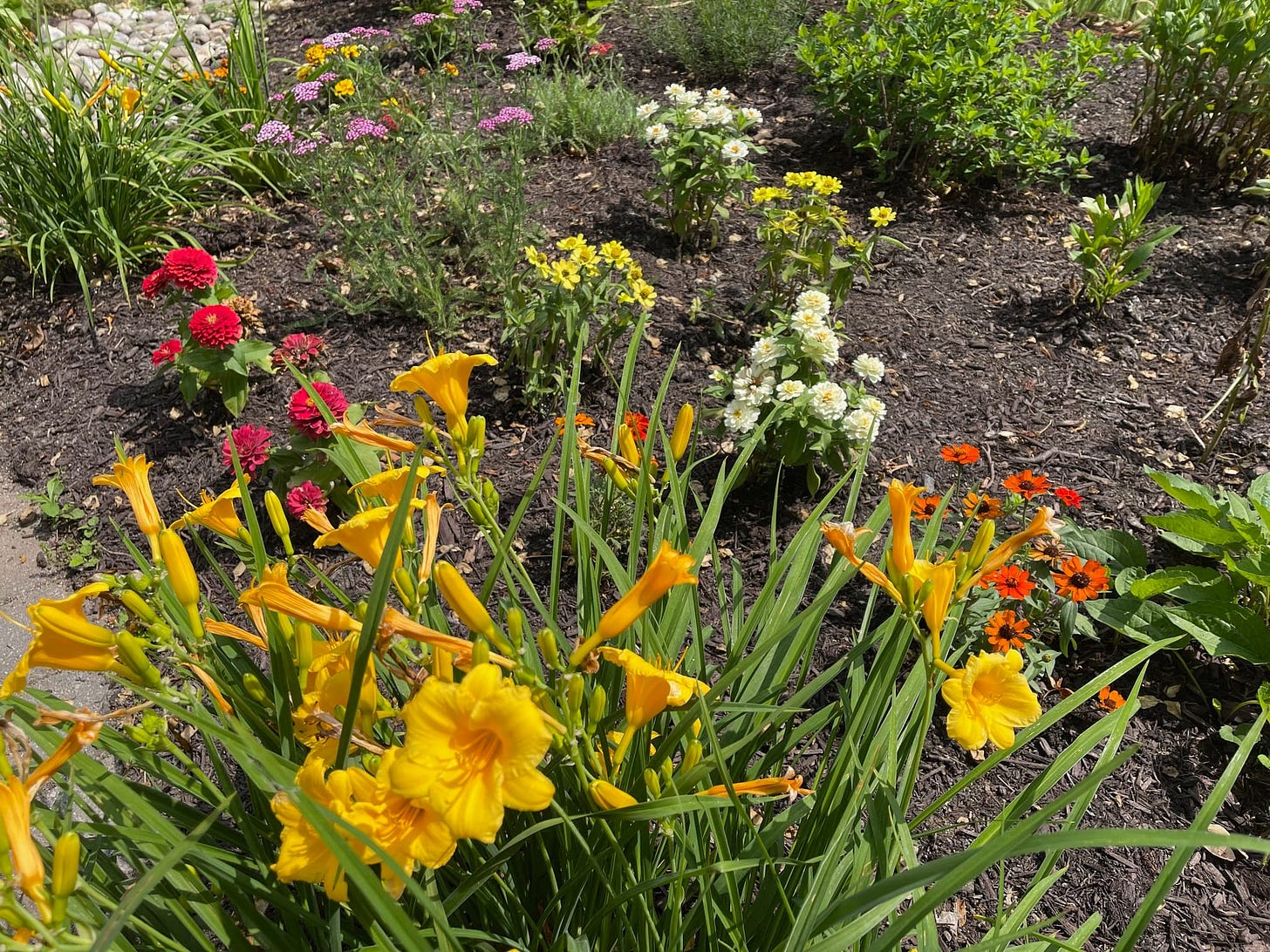
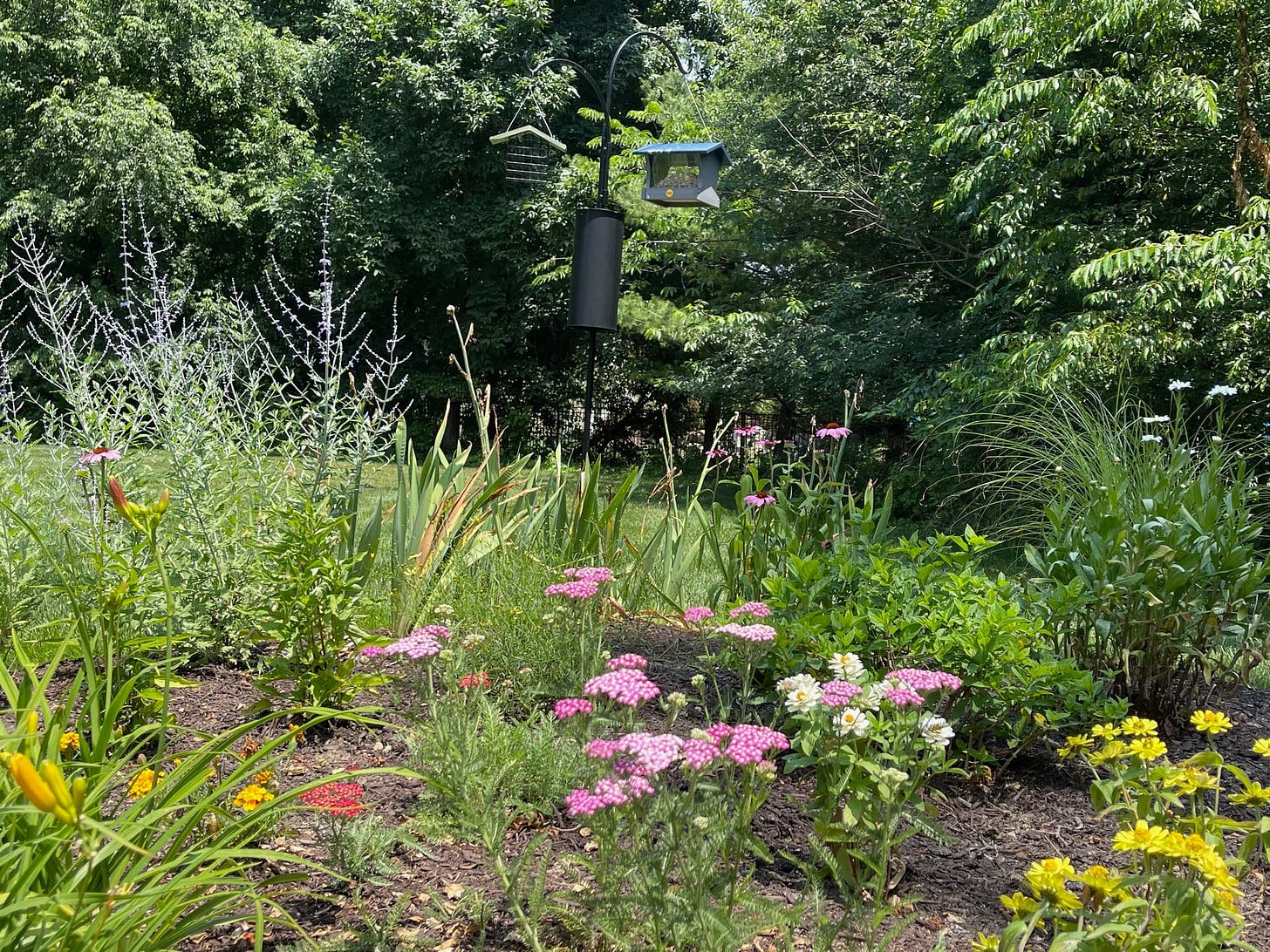
In the middle of the bed is a variety of sun-loving plants, including coreopsis, coneflowers, shasta daisies, black-eyed Susans, and panicle hydrangea. And in front are smaller plants like zinnias, yarrow, and daylilies framing the bed on each end. I think (what do I know?) that the result when you look at the bed from the front is terrific, with the plants at each level working together to give you a palette of colors. If I could only get the coreopsis, the coneflowers, and the back-eyed Susans to bloom, the bed will be spectacular. My wife, Linda, keeps reminding me that even though the temperature feels like midsummer, it’s still June with plenty of time for my summer bloomers to get in the game.
Which brings me to the action in the firepit bed, where the daylilies and the blue veronica have exploded with colorful flowers. Both of these plants have been such reliable performers that even I can’t seem to cause them too much trouble. The blue veronica is a little bit like the astilbe I wrote about last week: The flowers turn a bright blue for a short period of time surrounding the firepit with a brilliant blue hue. The rest of the time the flowers are a partial blue, and the display is somewhat disappointing. Maybe some plant food is in order?
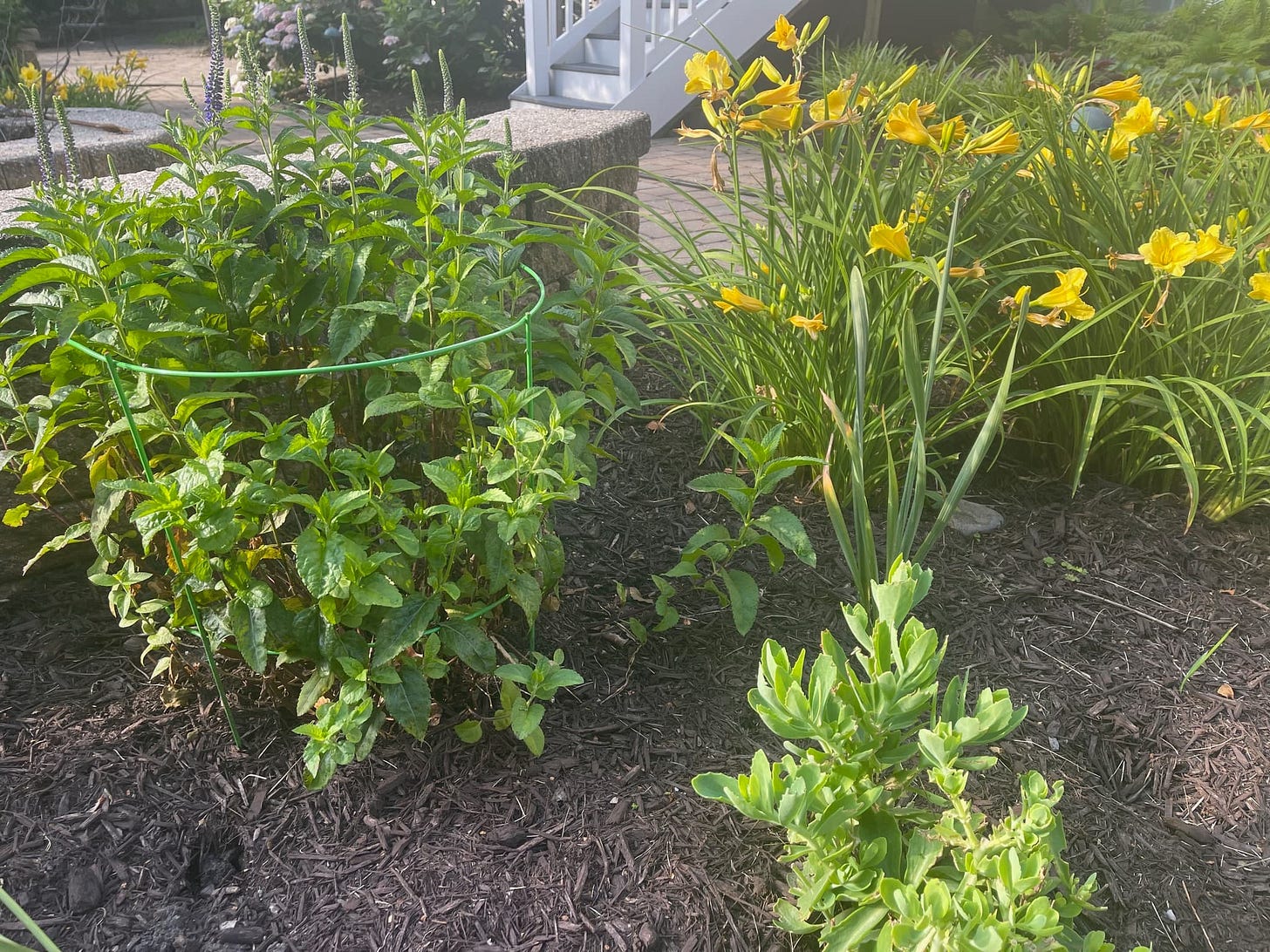
The only other plants that haven’t gotten into the game so far this summer are the plumbago in the back bed and the waterfall bed, and the allium that are also in the waterfall bed. I have to say that the plumbago in the back bed are huge, and I’m expecting incredible flowers when they finally bloom. As a reminder, plumbago is a blue ground cover that adds color to the bed for the entire summer. The allium are the delicate round blue flowers that are part of the onion family. They bloom for the entire summer, and I’ve lost all patience waiting for them to burst into color. They are throwing up their flower buds now and I expect them to get around to blooming in the next few weeks.
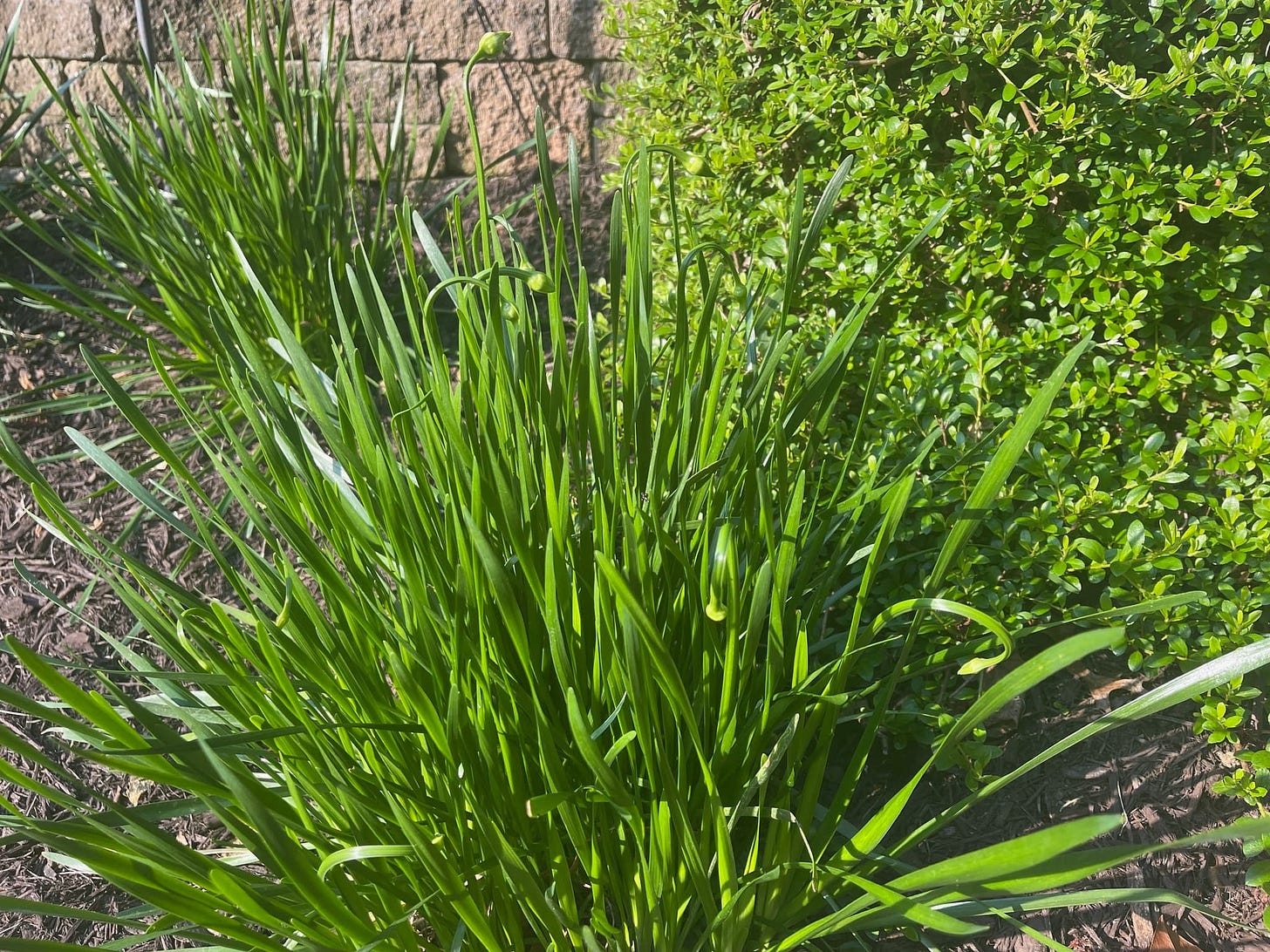
Speaking of the waterfall bed, my friend Neil and his crew from Jams Landscaping -- yes, the same company that originally installed the landscape way back in 2006 -- and, I might add, the same guy who actually did the installation, stopped by this week to replace the waterfall pump so now my water feature is actually working. I didn’t realize how much I missed the sound of the waterfall. While they were here, they put some new sand in the steps leading down from the driveway to the back patio. The steps look great when they are all dressed up. Thank you, Neil!
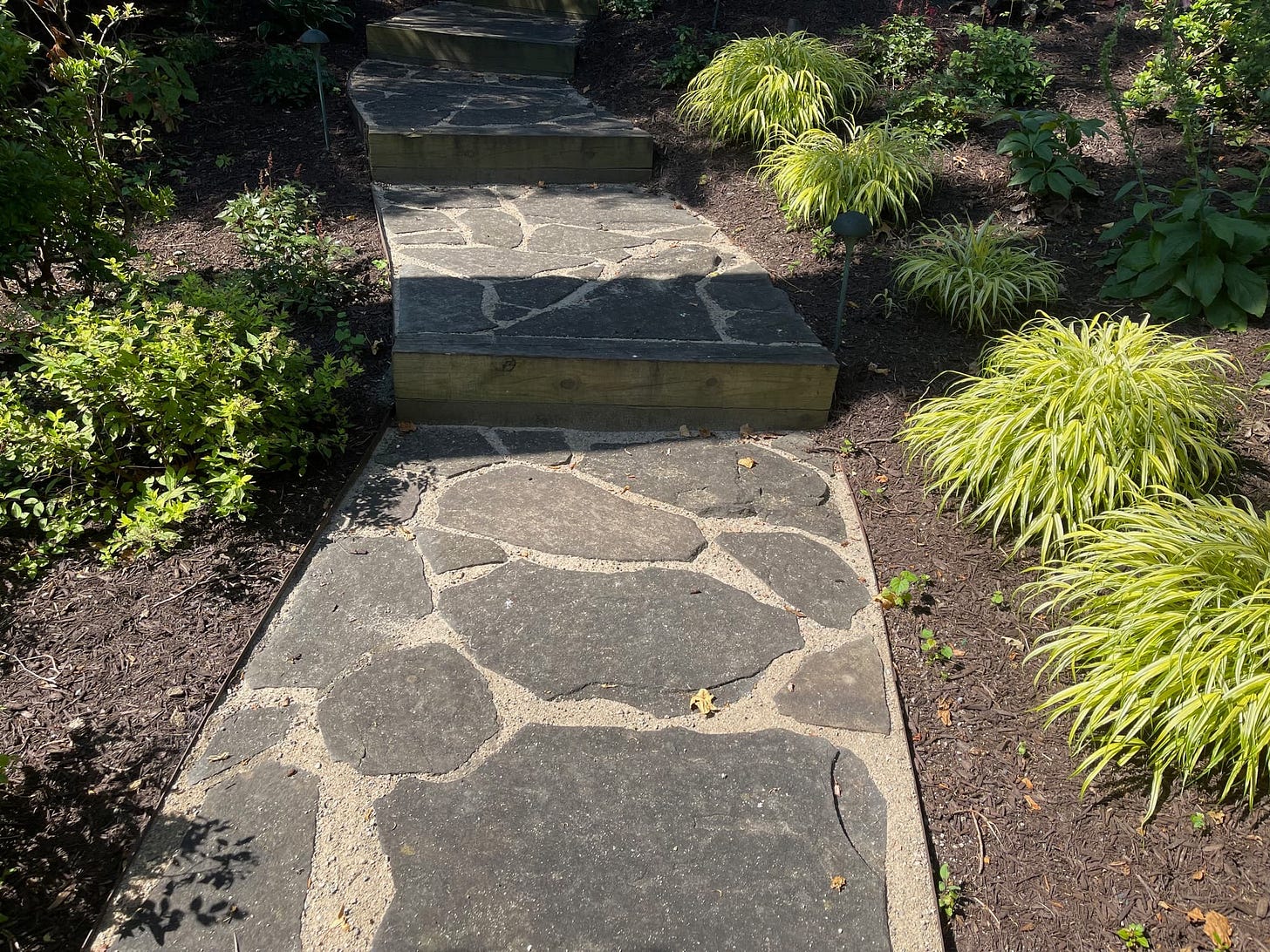
I’m trying to think what else was on my list of things that greatly puzzle me. Oh yes, you may recall that I wrote a blog earlier this year about the gazillions of cicadas that were supposed to descend upon us, turning our chill gardening Zen into a living nightmare. I’m not complaining mind you, but has anyone heard any cicadas in their neighborhood? I haven’t … yet. And here’s why. Apparently the two swarms that everyone was preparing for are still out there, but not in the state of Maryland. Here’s a map from Gene Kritsky, a biology professor at Mount St. Joseph University in Cincinnati, showing where the two different cicada broods are expected to show up. Almost all of Maryland looks safe to me. Virginia, maybe not. With the heat dome arriving, maybe the cicadas will cook in the high heat? Anyway, I’m pleased to report one less thing to worry about around here.
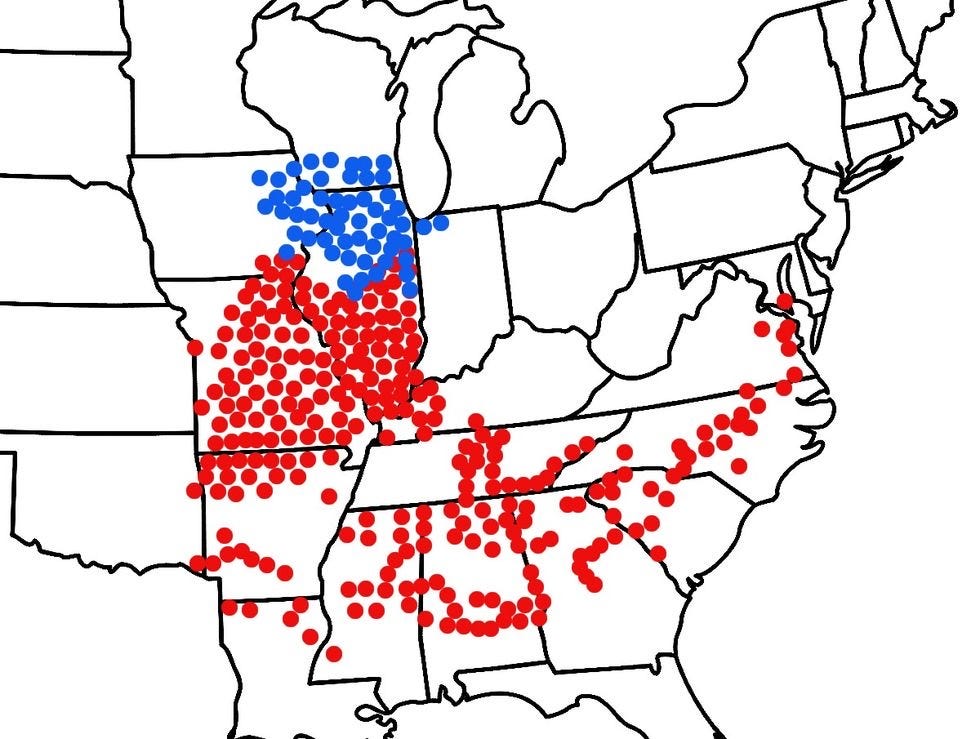
Considering this post is called Summer is Here, it’s probably a good time to be thankful that I’m an early riser. For the most part, I’m up at 6 a.m. and out in the garden by 7 a.m., long before the heat comes up. If you are not prone to getting up early and insist on getting out later in the day, please dress appropriately. Wear your stupid-looking, wide-brimmed gardening hat, apply your sunscreen, and stay hydrated. Temperatures in the high 90s are no joke, so be careful out there.
OK, I think that’s all to report on summer’s arrival. I’m not sure what I’ll be writing about next week, but whatever it is, it’s sure to be absolutely riveting, full of insights into the world of gardening that you just can’t get anywhere else. Remember, if you have absolutely nothing else to do, you might annoy a friend, acquaintance, or family member by sharing this newsletter with them. Just hit the SHARE button in this post or send them a link to kensolow.substack.com.
If you are desperate for more Painful Education of a Type A Gardener content, just click on the small images of me at the top of this post to go right to the archives. There’s some good stuff in there.




